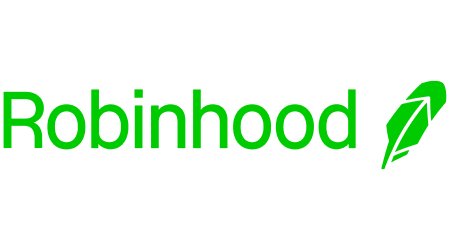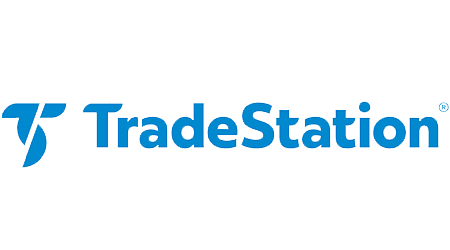How Much Does It Cost to Purchase Amazon Stock
Amazon.com Inc (AMZN) is a leading internet retail business based in the US. It opened the day at $3,562.67 after a previous close of $3,580.04. During the day the price has varied from a low of $3,536.85 to a high of $3,613.03. The latest price was $3,580.41 (25 minute delay). Amazon is listed on the NASDAQ and employs 1,468,000 staff. All prices are listed in US Dollars.
How to buy shares in Amazon
- Compare share trading platforms. Use our comparison table to help you find a platform that fits you.
- Open your brokerage account. Complete an application with your details.
- Confirm your payment details. Fund your account.
- Research the stock. Find the stock by name or ticker symbol – AMZN – and research it before deciding if it's a good investment for you.
- Purchase now or later. Buy your desired number of shares with a market order or use a limit order to delay your purchase until the stock reaches a desired price.
- Check in on your investment. Optimize your portfolio by tracking your stock.
Our top pick for
Beginners

Our top pick for
Guided Investing

Our top pick for
Active Traders

Amazon stock price (NASDAQ: AMZN)
Use our graph to track the performance of AMZN stocks over time.
Amazon shares at a glance
- Live prices
- Key figures
Information last updated 2021-11-24.
| Open | $3,562.67 |
|---|---|
| High | $3,613.03 |
| Low | $3,536.85 |
| Close | $3,580.41 |
| Previous close | $3,580.04 |
| Change | $0.37 |
| Change % | 0.0103% |
| Volume | 2,235,763 |
Information last updated 2021-11-20.
| 52-week range | $2,881.00 - $3,773.08 |
|---|---|
| 50-day moving average | $3,398.75 |
| 200-day moving average | $3,341.62 |
| Wall St. target price | $4,039.94 |
| PE ratio | 71.9499 |
| Dividend yield | N/A (0%) |
| Earnings per share (TTM) | $51.10 |
Buy Amazon shares from these brokerages
Compare special offers, low fees and a wide range of types of investments among top trading platforms.
*Signup bonus information updated weekly.
Amazon is expected to report earnings in November. Here's a look at recent results for this closely watched number.
| Next earnings report | Analysts' Q3 earnings per share estimate | Latest earnings | Q2 2021 | Q1 2021 | Q4 2020 | Q3 2020 |
|---|---|---|---|---|---|---|
| Nov. 1, 2021 (Estimated) | $9.01 | $7.78 billion | $7.78 billion | $8.11 billion | $7.22 billion | $6.33 billion |
Stock performance after earnings
Stocks frequently make significant price moves in the wake of earnings reports. But those price movements can be volatile, and direction is hard to predict. It's important to use caution when trading shares immediately before or after an earnings announcement.
The value of any investment can go up or down depending on news, trends and market conditions. We are not investment advisers, so do your own due diligence to understand the risks before you invest.
Is it a good time to buy Amazon stock?
The technical analysis gauge below displays real-time ratings for the timeframes you select. This is not a recommendation, however. It represents a technical analysis based on the most popular technical indicators: Moving Averages, Oscillators and Pivots. Finder might not concur and takes no responsibility.
This chart is not advice or a guarantee of success. Rather, it gauges the real-time recommendations of three popular technical indicators: moving averages, oscillators and pivots. Finder is not responsible for how your stock performs.
Amazon price performance over time
Historical closes compared with the close of $3580.4099 from 2021-11-23
| 1 week (2021-11-13) | N/A |
|---|---|
| 1 month (2021-10-20) | N/A |
| 3 months (2021-08-24) | 8.31% |
| 6 months (2021-05-24) | 10.34% |
| 1 year (2020-11-24) | 14.83% |
|---|---|
| 2 years (2019-11-22) | 105.10% |
| 3 years (2018-11-23) | 138.37% |
| 5 years (2016-11-23) | 358.96% |
Is Amazon stock undervalued or overvalued?
Valuing Amazon stock is incredibly difficult, and any metric has to be viewed as part of a bigger picture of Amazon's overall performance. However, analysts commonly use some key metrics to help gauge the value of a stock.
Amazon's P/E ratio
Amazon's current share price divided by its per-share earnings (EPS) over a 12-month period gives a "trailing price/earnings ratio" of roughly 72x. In other words, Amazon shares trade at around 72x recent earnings.
That's relatively high compared to, say, the trailing 12-month P/E ratio for the NASDAQ 100 at the end of 2019 (27.29). The high P/E ratio could mean that investors are optimistic about the outlook for the shares or simply that they're over-valued.
Amazon's PEG ratio
Amazon's "price/earnings-to-growth ratio" can be calculated by dividing its P/E ratio by its growth – to give 2.2006. A low ratio can be interpreted as meaning the shares offer better value, while a higher ratio can be interpreted as meaning the shares offer worse value.
The PEG ratio provides a broader view than just the P/E ratio, as it gives more insight into Amazon's future profitability. By accounting for growth, it could also help you if you're comparing the share prices of multiple high-growth companies.
Amazon's EBITDA
Amazon's EBITDA (earnings before interest, taxes, depreciation and amortisation) is $60.4 billion.
The EBITDA is a measure of a Amazon's overall financial performance and is widely used to measure a its profitability.
Amazon financials
| Revenue TTM | $458 billion |
|---|---|
| Operating margin TTM | 6.18% |
| Gross profit TTM | $152.8 billion |
| Return on assets TTM | 5.32% |
| Return on equity TTM | 25.83% |
| Profit margin | 5.74% |
| Book value | $237.80 |
| Market capitalisation | $1.9 trillion |
TTM: trailing 12 months
Amazon's environmental, social and governance track record
Environmental, social and governance (known as ESG) criteria are a set of three factors used to measure the sustainability and social impact of companies like Amazon.
When it comes to ESG scores, lower is better, and lower scores are generally associated with lower risk for would-be investors.
Amazon's total ESG risk score
Total ESG risk: 33.42
Socially conscious investors use ESG scores to screen how an investment aligns with their worldview, and Amazon's overall score of 33.42 (as at 12/31/2018) is nothing to write home about – landing it in it in the 52nd percentile of companies rated in the same sector.
ESG scores are increasingly used to estimate the level of risk a company like Amazon is exposed to within the areas of "environmental" (carbon footprint, resource use etc.), "social" (health and safety, human rights etc.), and "governance" (anti-corruption, tax transparency etc.).
Amazon's environmental score
Environmental score: 10.63/100
Amazon's environmental score of 10.63 puts it squarely in the 7th percentile of companies rated in the same sector. This could suggest that Amazon is a leader in its sector terms of its environmental impact, and exposed to a lower level of risk.
Amazon's social score
Social score: 18.52/100
Amazon's social score of 18.52 puts it squarely in the 7th percentile of companies rated in the same sector. This could suggest that Amazon is a leader in its sector when it comes to taking good care of its workforce and the communities it impacts.
Amazon's governance score
Governance score: 12.78/100
Amazon's governance score puts it squarely in the 7th percentile of companies rated in the same sector. That could suggest that Amazon is a leader in its sector when it comes to responsible management and strategy, and exposed to a lower level of risk.
Amazon's controversy score
Controversy score: 3/5
ESG scores also evaluate any incidences of controversy that a company has been involved in. Amazon scored a 3 out of 5 for controversy – a middle-of-the-table result reflecting that Amazon hasn't always managed to keep its nose clean.
Environmental, social, and governance (ESG) summary
Amazon.com Inc was last rated for ESG on: 2019-01-01.
| Total ESG score | 33.42 |
|---|---|
| Total ESG percentile | 52.16 |
| Environmental score | 10.63 |
| Environmental score percentile | 7 |
| Social score | 18.52 |
| Social score percentile | 7 |
| Governance score | 12.78 |
| Governance score percentile | 7 |
| Level of controversy | 3 |
Amazon share dividends
We're not expecting Amazon to pay a dividend over the next 12 months.
Have Amazon's shares ever split?
Amazon's shares were split on a 2:1 basis on 1 September 1999. So if you had owned 1 share the day before before the split, the next day you'd have owned 2 shares. This wouldn't directly have changed the overall worth of your Amazon shares – just the quantity. However, indirectly, the new 50% lower share price could have impacted the market appetite for Amazon shares which in turn could have impacted Amazon's share price.
Amazon share price volatility
Over the last 12 months, Amazon's shares have ranged in value from as little as $2881 up to $3773.0801. A popular way to gauge a stock's volatility is its "beta".
Beta is a measure of a share's volatility in relation to the market. The market (NASDAQ average) beta is 1, while Amazon's is 1.1143. This would suggest that Amazon's shares are a little bit more volatile than the average for this exchange and represent, relatively-speaking, a slightly higher risk (but potentially also market-beating returns).
Amazon overview
Amazon. com, Inc. engages in the retail sale of consumer products and subscriptions in North America and internationally. The company operates through three segments: North America, International, and Amazon Web Services (AWS). It sells merchandise and content purchased for resale from third-party sellers through physical and online stores. The company also manufactures and sells electronic devices, including Kindle, Fire tablets, Fire TVs, Rings, and Echo and other devices; provides Kindle Direct Publishing, an online service that allows independent authors and publishers to make their books available in the Kindle Store; and develops and produces media content. In addition, it offers programs that enable sellers to sell their products on its websites, as well as its stores; and programs that allow authors, musicians, filmmakers, skill and app developers, and others to publish and sell content.
Stocks similar to Amazon
Frequently asked questions
What percentage of Amazon is owned by insiders or institutions?
Currently 13.388% of Amazon shares are held by insiders and 59.181% by institutions.
How many people work for Amazon?
Latest data suggests 1,468,000 work at Amazon.
When does the fiscal year end for Amazon?
Amazon's fiscal year ends in December.
Where is Amazon based?
Amazon's address is: 410 Terry Avenue North, Seattle, WA, United States, 98109-5210
What is Amazon's ISIN number?
Amazon's international securities identification number is: US0231351067
What is Amazon's CUSIP number?
Amazon's Committee on Uniform Securities Identification Procedures number is: 023135106
How Much Does It Cost to Purchase Amazon Stock
Source: https://www.finder.com/buy-amazon-stock
0 Response to "How Much Does It Cost to Purchase Amazon Stock"
Post a Comment